The Allure of the Gooty Sapphire Tarantula
The Gooty Sapphire Tarantula (Poecilotheria metallica), a stunning arboreal tarantula, captivates enthusiasts with its vibrant blue and metallic coloration. Hailing from a specific region in India, this spider stands out in the diverse world of arachnids. Its striking appearance and unique characteristics make it a sought-after pet, but also highlight the importance of understanding its needs and the conservation challenges it faces. This article will delve into five amazing facts about the Gooty Sapphire Tarantula, exploring its appearance, habitat, behaviors, and conservation status. These magnificent creatures are not only beautiful, but also possess fascinating adaptations that allow them to thrive in their environment. Let’s uncover some of the most interesting aspects of this captivating species.
Unique Blue Coloration
One of the most remarkable features of the Gooty Sapphire Tarantula is its brilliant blue coloration. This striking hue is not just a random pigment; it’s a result of the intricate structure of the spider’s hairs, which refract light to produce the vibrant blue we observe. This iridescence is most pronounced on the legs and carapace, creating a mesmerizing display. The intensity of the blue can vary depending on the spider’s age, health, and the lighting conditions in its environment. Younger tarantulas often exhibit a less intense blue, which gradually deepens as they mature. This unique coloration serves a vital role in camouflage within their habitat.
Why is their coloration so vibrant?
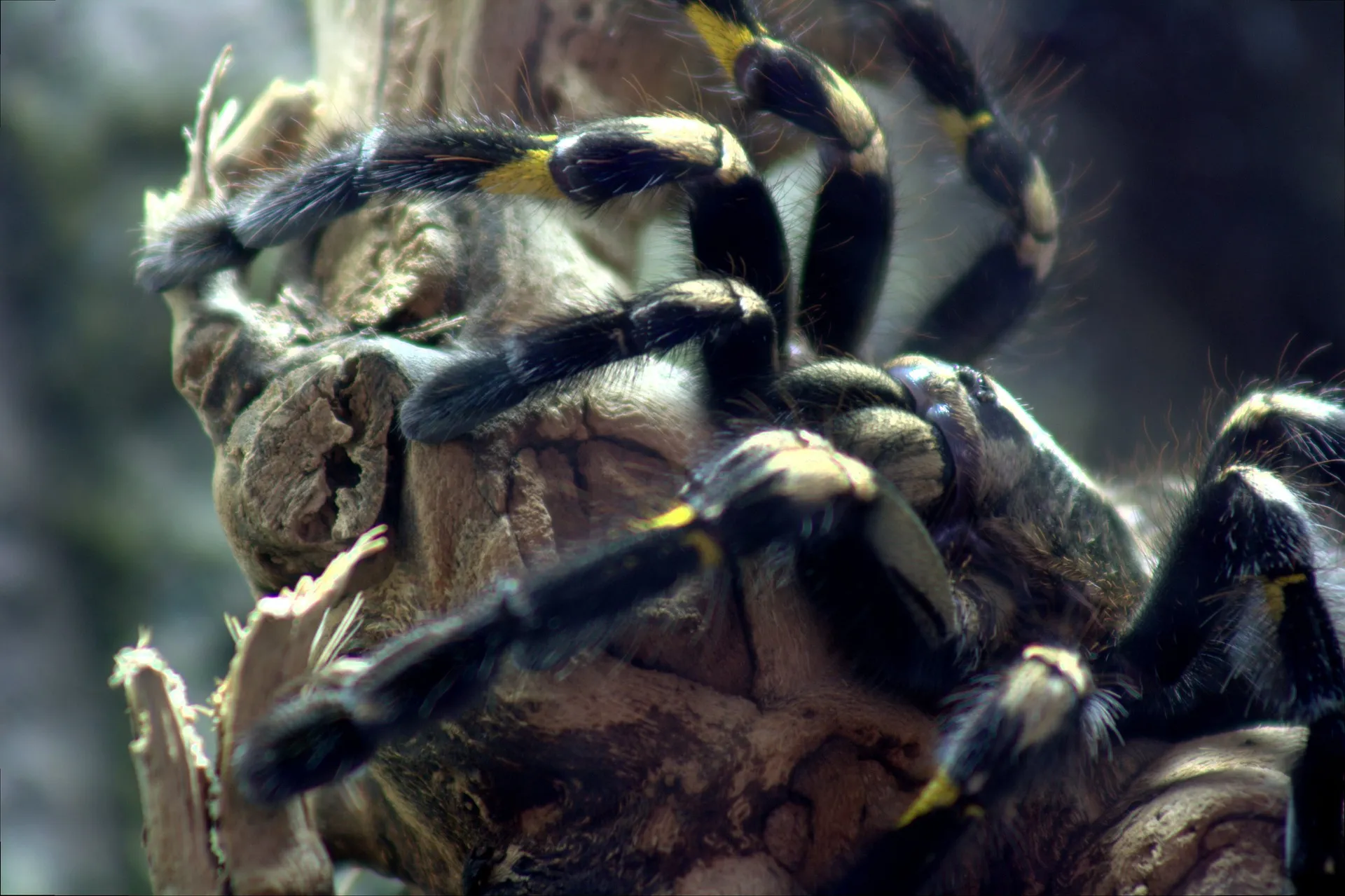
The vibrant blue coloration of the Gooty Sapphire Tarantula is not due to pigment, but structural coloration. Microscopic structures within the spider’s hairs and exoskeleton diffract light, creating the blue hue. This phenomenon is similar to how the wings of some butterflies appear iridescent. This structural coloration is not only visually appealing but may also serve a purpose in camouflage or attracting mates within their natural environment. The specific arrangement of these structures determines the intensity and shade of blue, making each spider’s appearance slightly unique. The health and molting cycle also contribute to the vibrancy of the blue, with well-fed and healthy spiders often displaying the most intense colors.
Habitat and Origin
The Gooty Sapphire Tarantula is endemic to a very specific region of Andhra Pradesh, India. These spiders are arboreal, meaning they live primarily in trees. They are found in specific types of forests and are adapted to the climate and environmental conditions of their native habitat. Understanding their natural habitat is crucial for providing appropriate care in captivity and for conservation efforts in the wild. They prefer to inhabit hollows and crevices within trees, where they build their webs. They thrive in warm, humid environments and are sensitive to changes in temperature and humidity.
Where do they come from?
Gooty Sapphire Tarantulas are native to a very limited area within the Indian subcontinent. Specifically, they originate from the Gooty region of Andhra Pradesh, which is where they get their common name. Their natural habitat has been significantly impacted by deforestation and habitat loss. This has led to a decline in wild populations, making conservation efforts crucial for the species’ survival. The spiders have adapted over generations to the specific environmental conditions within this region, further highlighting the importance of protecting their native environment.
What is their natural habitat?
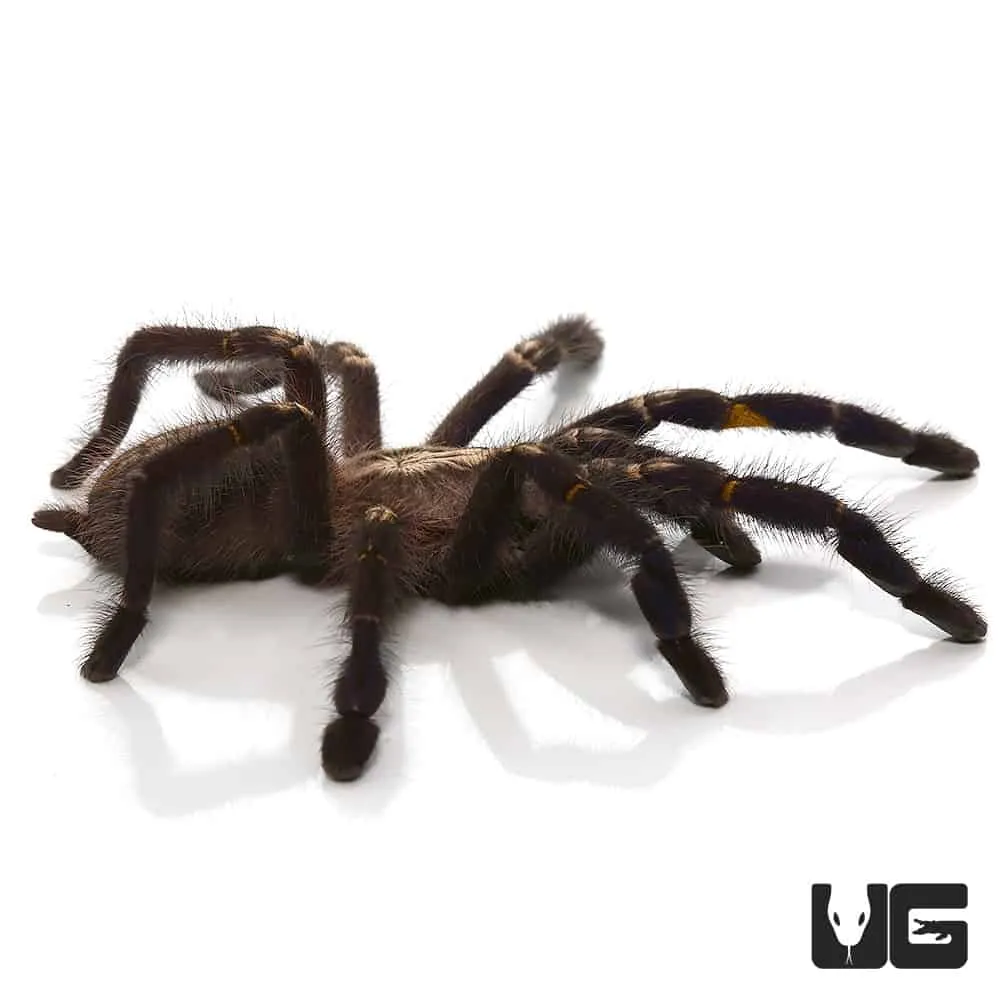
In the wild, Gooty Sapphire Tarantulas prefer the shelter of mature trees, often inhabiting hollows, crevices, and the space beneath loose bark. They build intricate webs to trap prey and create a secure shelter. Their arboreal lifestyle is adapted to a warm and humid climate. The presence of these habitats is crucial for their survival. Their natural environment provides them with the necessary shelter, humidity, and food sources to thrive. Protecting their natural habitat is critical for the species’ survival, especially against deforestation and human activity. These tarantulas play a role in the ecosystem by controlling insect populations.
Venom and Defense Mechanisms
Like all tarantulas, the Gooty Sapphire Tarantula possesses venom, which it uses to subdue its prey. While their venom is not considered lethal to humans, a bite can be painful and cause localized symptoms. Their primary defense mechanism is, however, their speed and ability to flee. They can also flick urticating hairs from their abdomen as a deterrent, which can cause irritation to the skin and eyes. The spider will typically bite only when threatened or provoked. Understanding their venom and defense mechanisms helps inform safe handling practices for both pet owners and researchers. The venom’s potency is moderate, and reactions vary based on the individual and the amount of venom injected.
How venom affects prey?
The venom of the Gooty Sapphire Tarantula is primarily used to immobilize and subdue its prey. The venom contains a complex mixture of toxins that affect the nervous system of insects and other invertebrates, causing paralysis. This allows the tarantula to safely consume its meal. The venom starts to take effect very quickly after the bite and quickly subdues the prey, which includes insects such as crickets, roaches, and other small invertebrates. The venom also contains enzymes to help break down the prey’s tissues, making it easier for the tarantula to digest its meal. While not lethal to humans, the venom is very effective for its intended purpose.
How do they defend themselves?
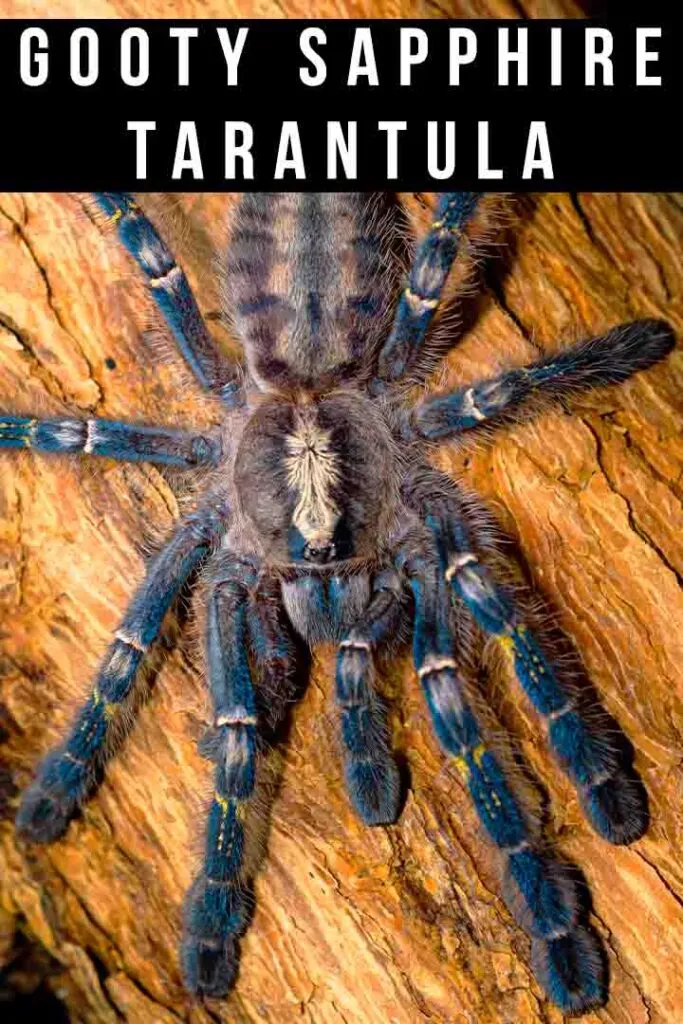
When threatened, Gooty Sapphire Tarantulas have several defense mechanisms. They are incredibly fast and can retreat quickly to a safe location. They can also flick urticating hairs from their abdomen, which are small, barbed hairs that cause irritation to the skin and eyes of potential predators or perceived threats. Bites are reserved as a last resort. They will typically display a threat posture, raising their front legs and fangs as a warning. Handling these spiders requires caution and knowledge of their defensive behaviors to avoid injury to both the spider and the handler. Responsible pet ownership includes learning to recognize and respect these defense mechanisms.
Lifespan and Growth
Gooty Sapphire Tarantulas have a relatively long lifespan, especially for females. They undergo a process called molting, shedding their exoskeleton to grow. This process is a vulnerable time for the spider, and it’s important to provide a safe environment during molting. Their growth rate is influenced by factors like diet, temperature, and humidity. The lifespan of a female Gooty Sapphire Tarantula can reach up to 12 years or more in captivity, while males typically have shorter lifespans, often living only a few years after maturity. Understanding their growth and molting cycles is essential for providing appropriate care.
What is the average lifespan?
Female Gooty Sapphire Tarantulas have a considerably longer lifespan than males. They can live for up to 10-12 years or even longer in captivity with proper care, while males typically live only a few years after reaching maturity, often not much longer than a year or two. Their lifespan is influenced by a variety of factors, including genetics, diet, and the environmental conditions of their enclosure. Careful monitoring of these factors ensures that the tarantula lives for the longest possible time. The longer lifespans of females allow them to reproduce multiple times, which helps sustain the species.
How do they grow?
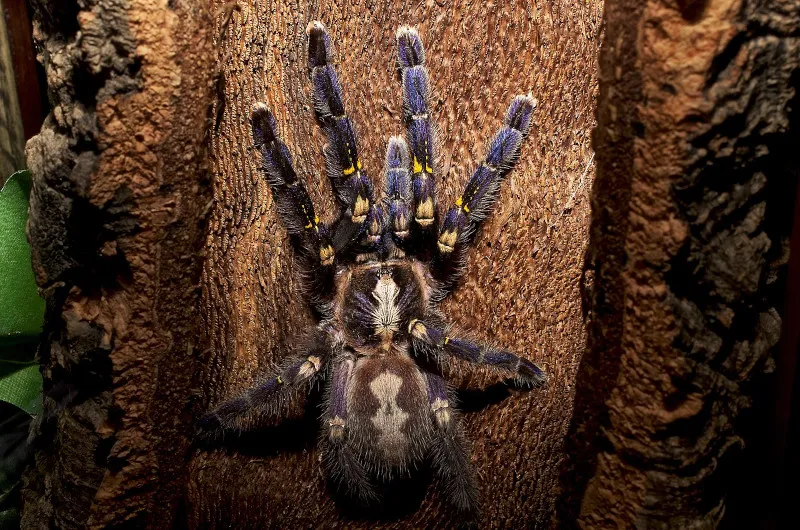
Like all tarantulas, Gooty Sapphire Tarantulas grow by molting, shedding their exoskeleton to reveal a new, larger one. This process can be stressful, and the tarantula is very vulnerable during this time. They will typically stop eating before molting and may hide in their burrow or enclosure. The frequency of molting decreases as the spider matures. Juvenile tarantulas molt more often than adults. Provide adequate humidity and a safe environment during the molting process. After molting, the tarantula’s new exoskeleton will be soft and vulnerable for a short period. During this time, they will slowly regain their strength and color.
Conservation Status and Threats
The Gooty Sapphire Tarantula is considered critically endangered in the wild. Habitat loss due to deforestation and agricultural expansion is the primary threat. The pet trade, although potentially contributing to conservation efforts through captive breeding, also poses a risk if unsustainable collection practices occur. Conservation efforts focus on habitat preservation, captive breeding programs, and raising awareness about the importance of protecting this species. The future of the Gooty Sapphire Tarantula depends on collaborative efforts between conservationists, researchers, and local communities to protect its native habitat. It is important to support reputable breeders and avoid the wild-caught specimens.
What are the main threats?
The primary threats to the Gooty Sapphire Tarantula are habitat loss and degradation. Deforestation for agriculture, urbanization, and logging significantly reduce the available habitat for the species. Illegal collection for the pet trade can also pose a threat, particularly if collection rates are unsustainable. Climate change and extreme weather events can further impact the tarantula’s habitat. The fragmentation of their habitat isolates populations, reducing genetic diversity and making them more vulnerable to environmental changes. It’s crucial to understand and address these threats to secure the future of the Gooty Sapphire Tarantula.
How can we help?
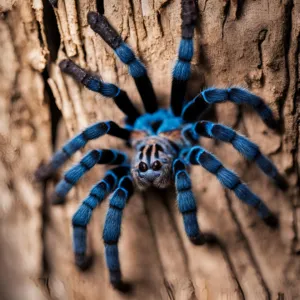
Supporting conservation efforts is crucial. This can include donating to conservation organizations, advocating for habitat protection, and promoting responsible pet ownership. If you are considering owning a Gooty Sapphire Tarantula, source it from a reputable breeder who prioritizes sustainable breeding practices. Educate yourself and others about the species and the threats it faces. By supporting captive breeding programs and habitat preservation initiatives, we can help ensure the survival of this stunning species. Supporting sustainable practices in the pet trade and educating others about the importance of conservation are vital steps.
